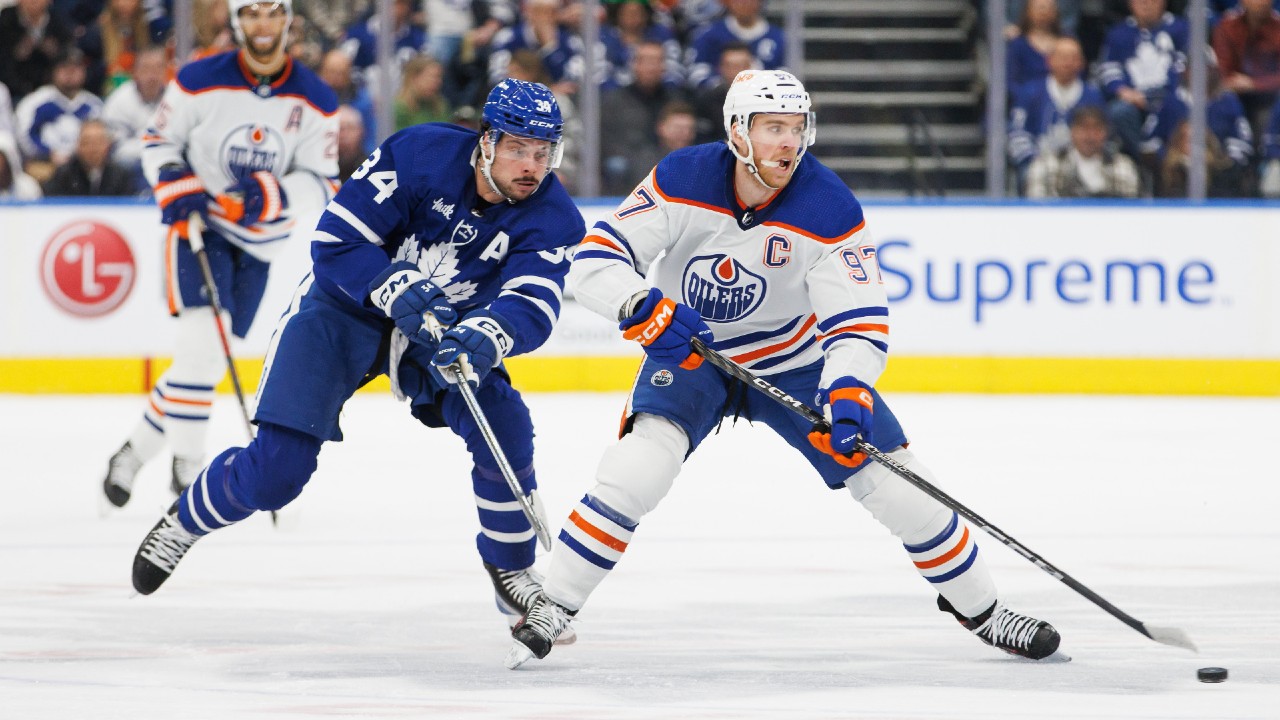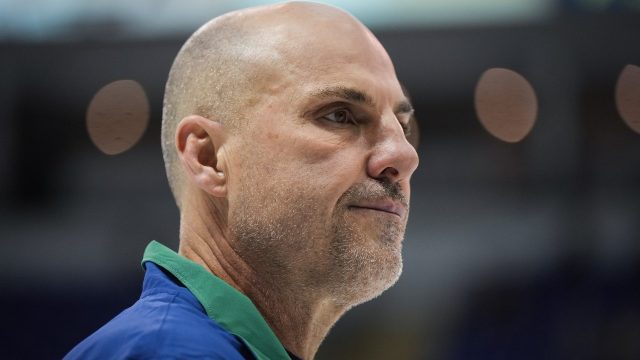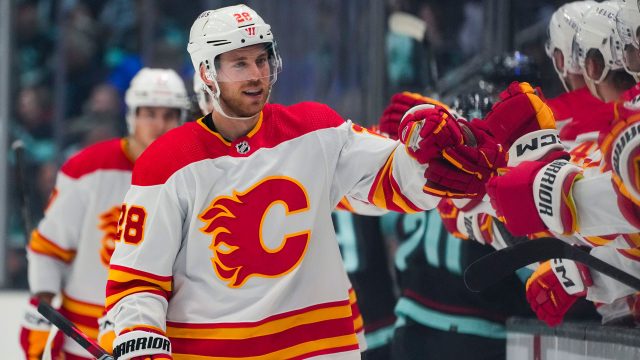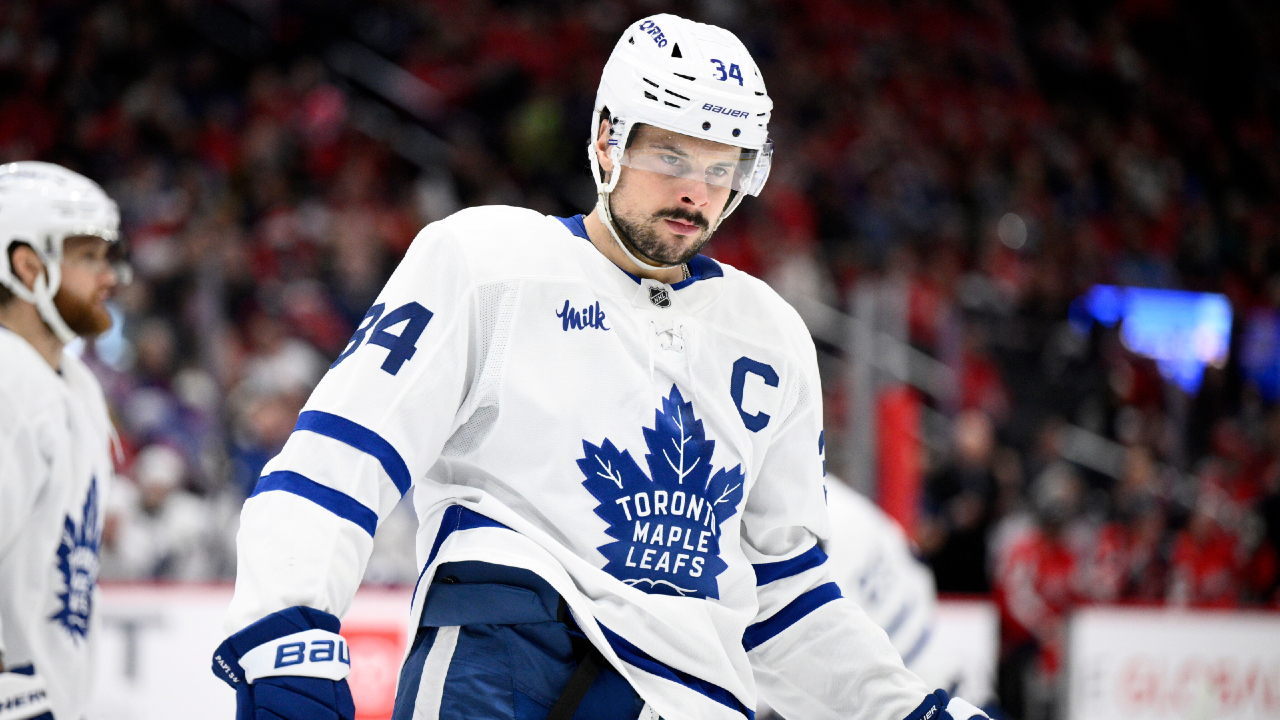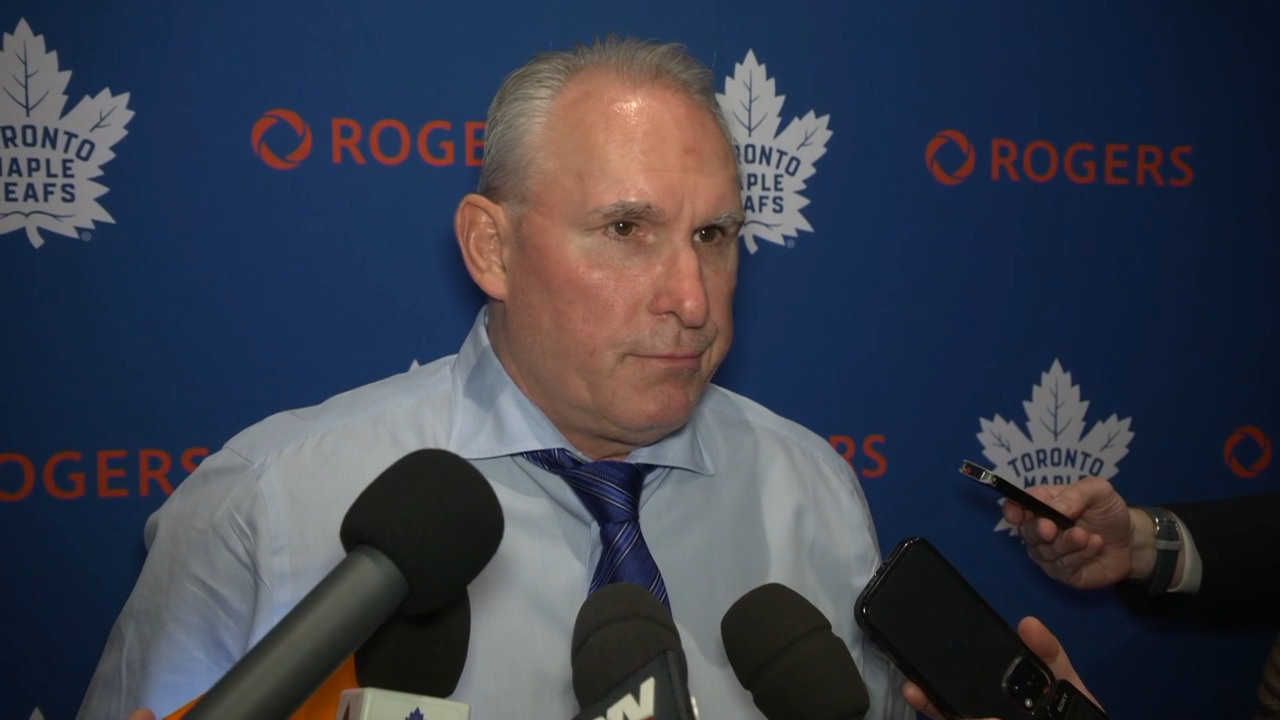
VANCOUVER — Trades sometimes take years to assess. Or we can just wait until April or May and see how the Vancouver Canucks do with Elias Lindholm.
Team president Jim Rutherford is famous for identifying the player he wants, negotiating what is necessary to get him, and then beating the rest of the National Hockey League to a trade. It should surprise no one that Rutherford’s disciple, Canucks general manager Patrik Allvin, displayed the same bold aggressiveness in landing Lindholm in Wednesday night’s blockbuster move with the Calgary Flames.
Allvin got his player, and the Canucks have a superior two-way centre to partner with Elias Pettersson and provide further heft and versatility to Vancouver’s top six forwards.
“For myself being familiar with him and watched him since coming up in Sweden,” Allvin said in a Zoom call with reporters Thursday afternoon, “I felt that giving us a right-shot centre, a player that competed at a highest level for years, and being a really solid 200-foot player, makes us harder to play against and make our coaching staff have more options in in the top six. That’s why we were attracted to Elias here.
“The intriguing part of his game — the 200-foot, right-shot centre — those are hard to find.”
And costly.
For a 29-year-old player headed towards unrestricted free-agency after this season, Allvin bundled five assets headlined by the Canucks’ first-round pick in June, high-ceilinged prospect Hunter Brzustewicz and struggling goal-scorer Andrei Kuzmenko.
“I feel our top six needed to improve a little bit with a caliber player like Elias to find more consistency going down the stretch,” Allvin said of prioritizing Lindholm, who was drafted fifth-overall by Rutherford 11 years ago in Carolina.
“We all know the matchups going down the stretch here, the last 33 games. That’s where you need your four lines to be strong. . . in the two-way game. That’s where we felt that adding a piece like Elias here for the cost of what we paid, for now but potentially for the future as well, it was something that we felt strong about.”
Yes, the future.
There is an intriguing subplot to this trade found in the context of Pettersson’s refusal so far to re-start negotiations with the Canucks over a contract extension. Pettersson is eligible for restricted free agency this summer – and potentially unrestricted free agency in 2025 – but decided in August to shut down talks in order to focus on this season.
He has said nothing since then to indicate that he wants to stay in Vancouver.
It is foolish to project Lindholm as a potential straight-up replacement for Pettersson, a 25-year-old scoring star who is one of the 10 best forwards in the game. Lindholm is a two-way centre who scored at an 82-game pace of 29 goals and 70 assists during his five-and-a-half seasons in Calgary.
But nothing happens in a vacuum and it would be naïve to think Canucks management hasn’t considered the possibility of life without Pettersson and what that Vancouver team might need. No one player is going to be available to replace Pettersson if he goes, but the hole he leaves behind at centre won’t be quite so cavernous if the Canucks have Lindholm to play behind J.T. Miller and ahead of Pius Suter at centre.
Allvin told reporters there is a “realistic” path forward to keeping both Pettersson and Lindholm.
At the very least, acquiring Lindholm now and having his rights until July 1 provides management partial insurance against Pettersson leaving. The team has been patient so far with Pettersson’s contract standoff, but Rutherford and Allvin will want to know the player’s intentions.
“Yeah, I think there’s a realistic way,” Allvin said of keeping both Eliases. “And I think those are the things that we’re always projecting when we do business here. Every day you have a projection on your future lineup and roster. And as I said, every decision has impact on the team now, but we’ve also got to be careful moving forward.”
As for now, having Pettersson, Miller and Lindholm down the middle, supported by Suter and Teddy Blueger, make the Canucks as strong at centre as they have ever been.
Lindholm looks like a straight lineup swap for Kuzmenko on Pettersson’s line, alongside winger Ilya Mikheyev. Pettersson shoots left, Lindholm right. Pettersson’s strength is the offensive zone, but Lindholm’s physical strength and matchup experience could make him a better choice at centre in the defensive zone.
The top-six pairings of Pettersson with Lindholm and Miller with Brock Boeser are formidable.
The Canucks’ powerful forward group is even better than it was two days ago.
Kuzmenko could be a 30-goal scorer in the NHL for multiple years. But during his sophomore slump this season, bereft of confidence and either unwilling or incapable of engaging physically the way Tocchet wants, Kuzmenko had become a $5.5-million deadweight.
The Flames needed to take Kuzmenko to make the trade work financially, the same way the Canucks in last year’s Bo Horvat trade were willing to absorb Anthony Beauvillier and his $4.15-million cap hit from the New York Islanders.
The bigger cost to the Canucks in the acquisition of Lindholm is their first-round pick and Brzustewicz, who has outperformed his third-round 2023 draft position and is on pace to eclipse 100 points this season in junior with the Kitchener Rangers.
Brzustewicz, 19, is the kind of wild-card prospect who could either explode or fizzle at the NHL level. But he was a player Allvin was willing to surrender while protecting Vancouver’s best two defence prospects: Tom Willander and Elias Pettersson 2.0.
The first-rounder is a first-rounder, and if the Canucks fail to advance in the playoffs and Lindholm leaves as a rental, it will be a big gamble lost.
But as Rutherford noted two weeks ago, doing nothing to further upgrade a team in a position to challenge for a Stanley Cup is also risky.
“You can make the right changes and it can still not work, so there’s a risk in it,” Rutherford said. “But there’s also a risk in not trying to improve the team when you get to a certain level. And I’ve seen that with teams, where I say, ‘Wow, that team’s pretty good,’ and then they don’t do anything.”
Rutherford is not the don’t-do-anything type.
He won a Stanley Cup with the Carolina Hurricanes in 2006 after acquiring Doug Weight and Mark Recchi ahead of the trade deadline, and his back-to-back championships with the Pittsburgh Penguins came after bolstering the defence by adding Justin Schultz and Trevor Daley (2016), and Ron Hainsey and Mark Streit (2017).
“The players and the coaches have worked hard to get to where they are,” Rutherford told Sportsnet’s Jeff Marek on Thursday, “and we felt giving them a better chance to win was the right thing to do. And Lindholm was one of the top players that was going to be available in the trade market and we went out and got him.
“We’re not the same team that people were talking about (before the season) struggling to get into a wildcard spot. We’ve improved our team dramatically with some of the changes.”
Chances are they’ll improve it some more before the March 8 deadline.
The Canucks could still use another experienced NHL defenceman for depth, and Tocchet has tried all season to find wingers capable of digging out pucks for Miller and Pettersson.
Allvin has orchestrated an NHL-leading seven trades since the eve of training camp. Bet on there being at least an eighth before March 8.


